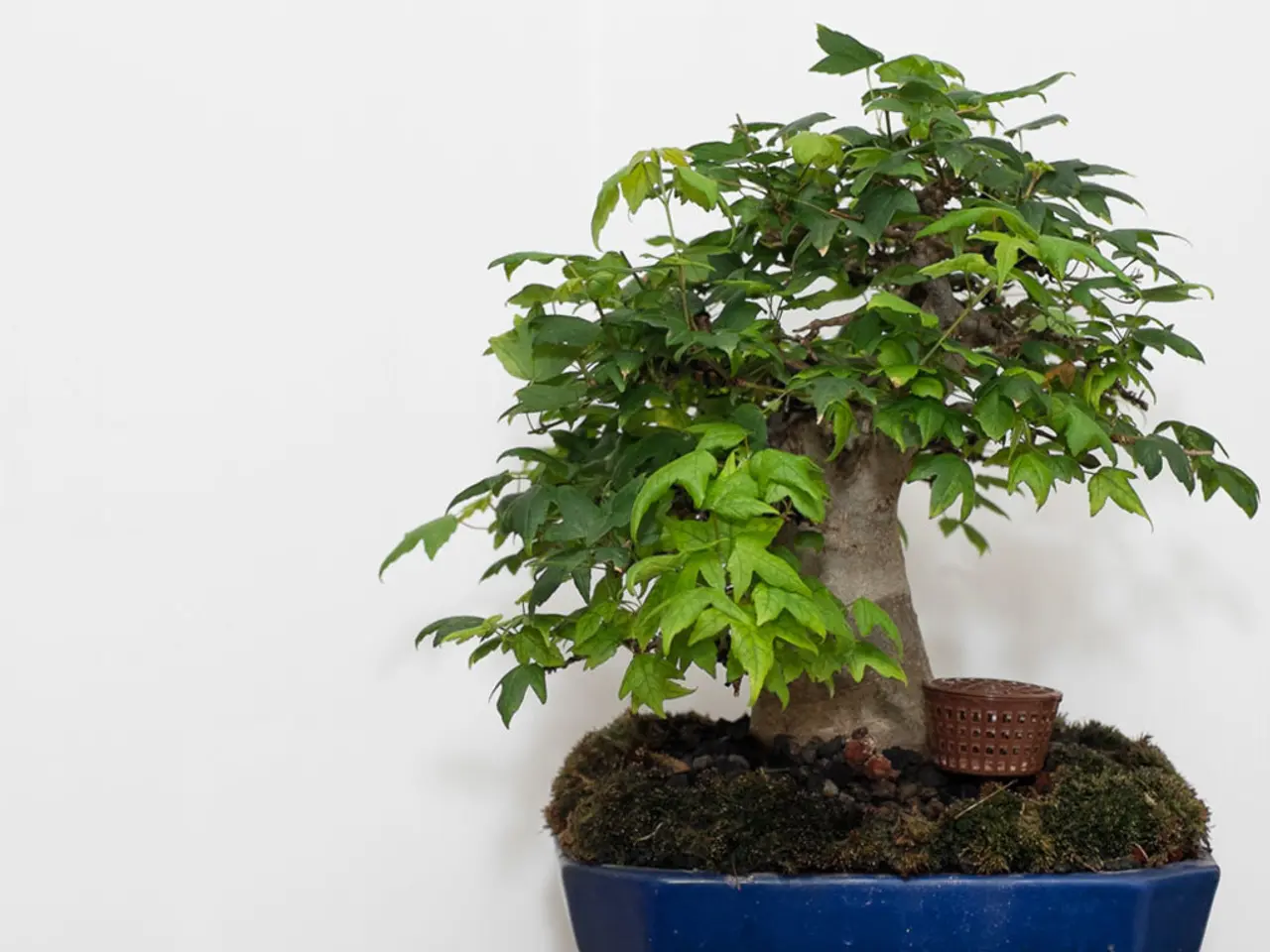Enhancing Bonsai Root Ventilation: Significance and Striving for Ideal Rooting Environment
In the world of bonsai, maintaining a healthy root system is crucial for the overall vitality and development of these miniature trees. Here are some best practices for improving root aeration:
- Choosing the Right Soil Mix
A well-draining and airy soil mix is essential. Composed of inorganic components like akadama (a hard clay), pumice (volcanic rock), and lava rock, this blend allows air to penetrate and excess water to drain, preventing root rot and suffocation. [1][5]
- Avoiding Compacted Soil
Ordinary soil can suffocate roots due to poor aeration and drainage. To encourage healthy root growth, it's important to use specialized bonsai soil. [5]
- Selecting the Right Pot
Shallow pots made of breathable materials such as clay, ceramic, or terracotta are ideal. These materials enhance aeration around the root zone compared to plastic pots. [3]
- Regular Repotting
Repotting every 1–2 years refreshes the soil, prunes roots, and prevents the tree from becoming root-bound, which restricts air flow to roots and stunts growth. [2][4]
- Careful Watering
Watering bonsais carefully is vital. Ensure thorough watering until water drains freely, but never allow the roots to sit in standing water. Proper moisture balance helps maintain aeration in the soil. [1][4]
These practices create an environment that supports healthy root respiration and growth, essential for overall bonsai vitality and development.
- Monitoring Soil Oxygen Levels
Monitoring soil oxygen levels is crucial to guarantee maximum root respiration and prevent root rot. Soil probes, oxygen meters, visual inspections, and waterlogging tests can be used to monitor soil oxygen levels. [6]
- Preventing Water Accumulation
Consistent moisture levels and shallow, wide containers with adequate drainage holes enhance root spread and prevent water accumulation. [7]
- Improving Soil Structure
Improving soil structure is possible by incorporating materials that enhance drainage, aeration, and water retention. [8]
- Adding Aeration Aids
Adding perlite to the soil mix can substantially improve root aeration. Aeration tubes and mesh screens can increase oxygen flow and prevent waterlogging. [9]
- Rotating the Bonsai
Rotating the bonsai every 1-2 weeks can prevent root aeration imbalance. [10]
- Proper Pruning and Inspection
Repotting allows for pruning and inspection of roots, identifying and addressing any signs of disease, pests, or damage. Repotting mats and root pruning scissors facilitate efficient and precise repotting and pruning procedures. [11]
- Gently Teasing Out Roots
Root hooks and root rakes are essential for gently teasing out tangled roots and removing dead or damaged tissue. [12]
- Avoiding Overwatering
Overwatering can lead to root rot and a decline in overall health. Watering should be done when the top 1-2 inches of soil feel dry to the touch. [13]
- Catering to Specific Species
Some bonsai species, like Japanese Maple, Elm, and Pine, are particularly finicky and require extra attention to aeration to thrive. [14]
By following these practices, bonsai enthusiasts can create an optimal root environment that supports healthy tree growth and contributes to the beauty and longevity of these fascinating miniature trees.
In the realm of bonsai, home-and-garden enthusiasts and gardening aficionados can also apply these practices to improve root aeration. By using specialized bonsai soil, choosing breathable pots, and perform regular repotting every 1-2 years, bonsai lovers can encourage healthy root growth and prevent suffocation. [1][3][4]
Moreover, monitoring soil oxygen levels, improving soil structure, and adding aeration aids like perlite can further support root respiration and growth. This holistic approach to bonsai care contributes to the overall vitality and development of these miniature trees, making them a stunning home-and-garden feature that complements any lifestyle. [6][8][9]




